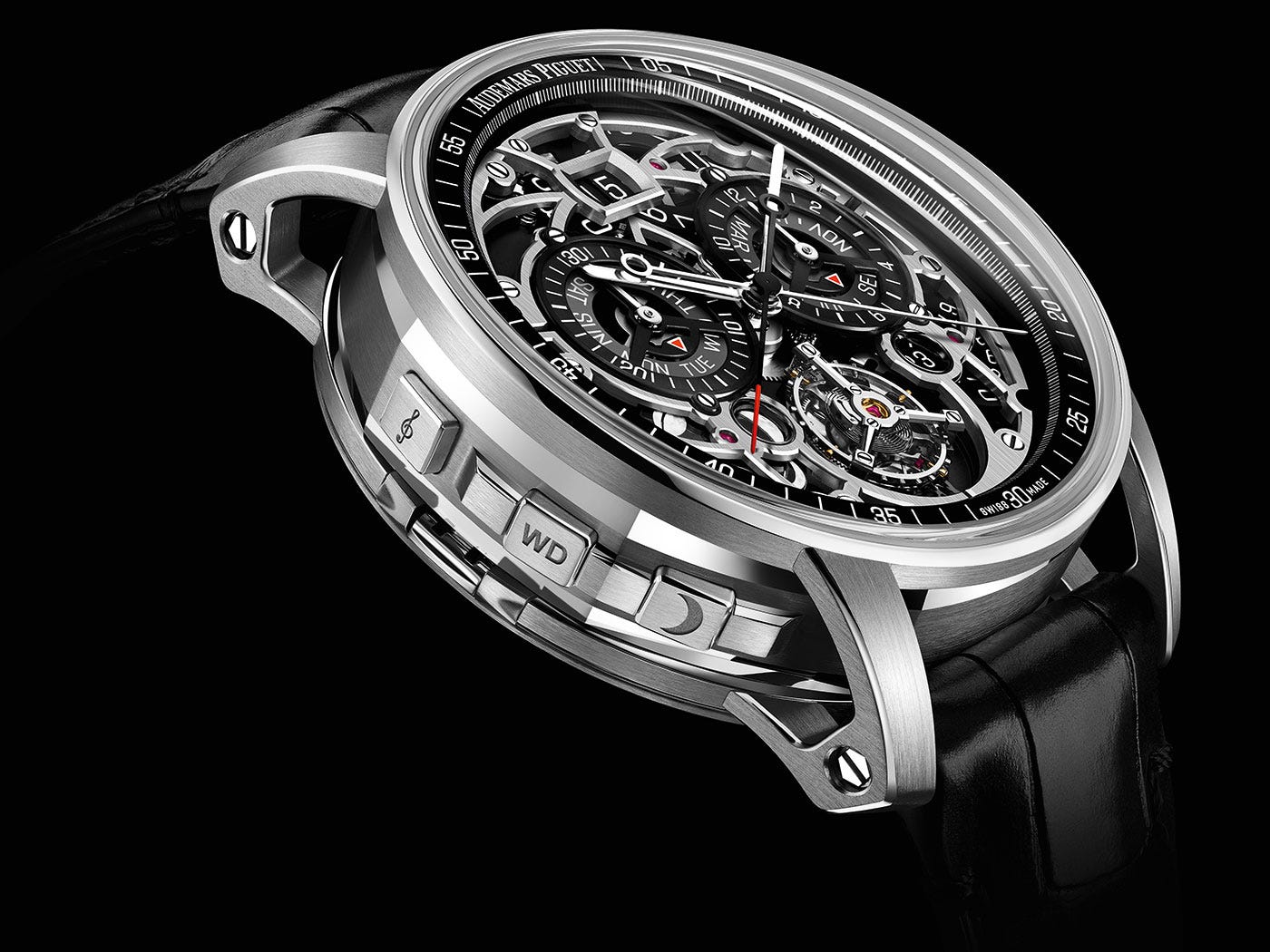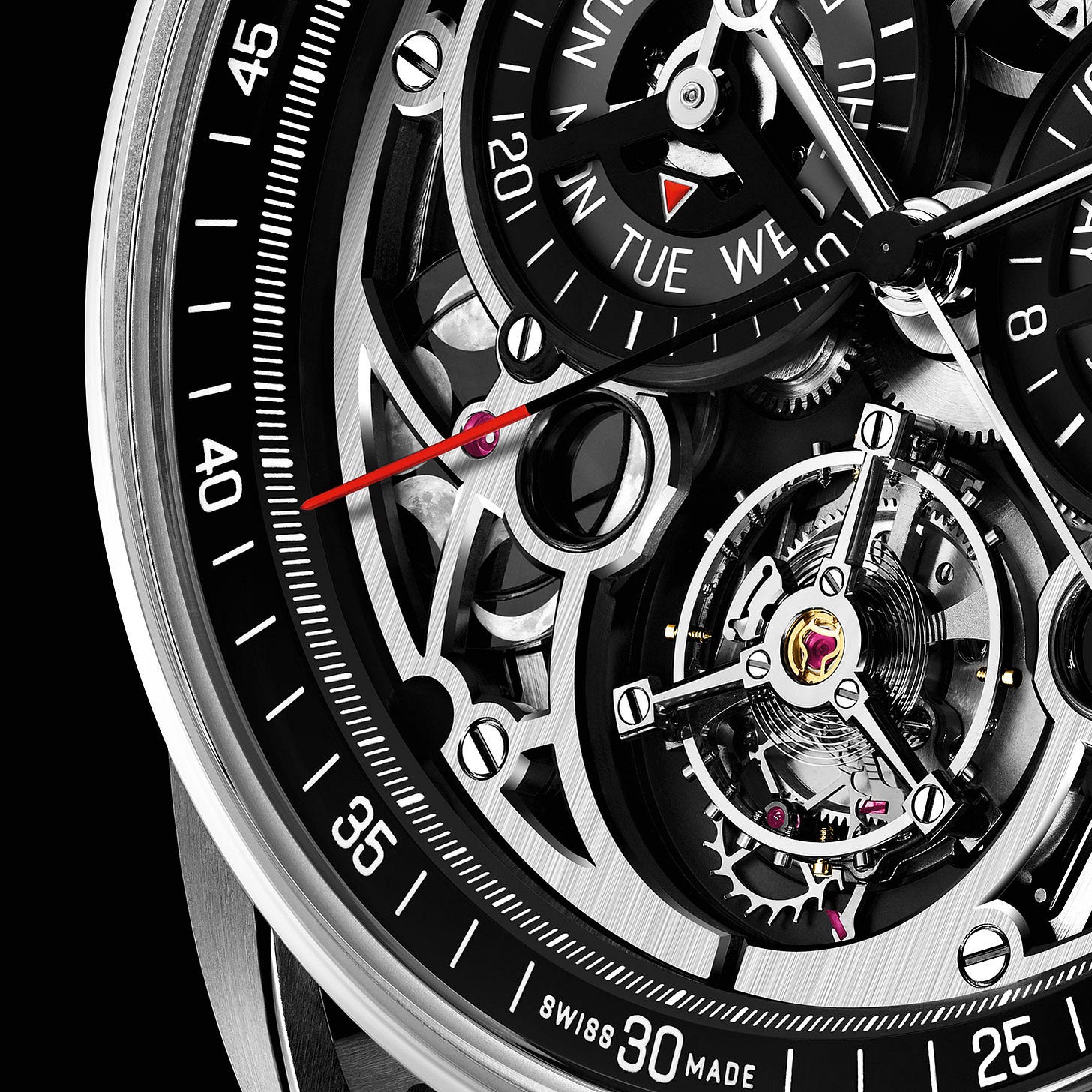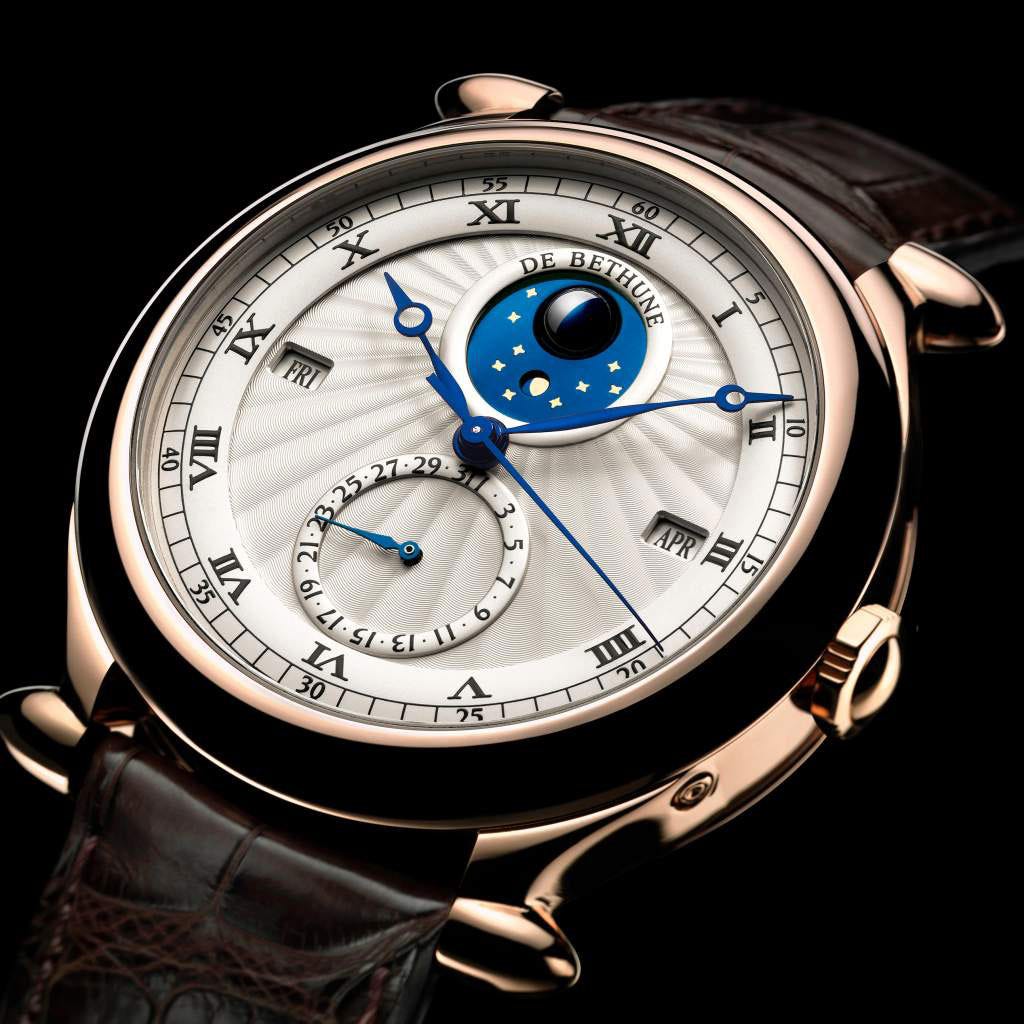Challenge To Watchmakers: Who's Up For A REALLY Accurate Moonphase?
I'm picking' up good librations.

For some time now, the main talking point for any moonphase complication has been its precision – specifically, how long you can run the complication without it drifting out of sync with the actual phase of the Moon. The simplest moonphase complication – one with a disk with 59 teeth on its edge, and two moon disks printed on it – advances one tooth per day. A lunar month is very approximately 29.5 days (29.5 x 2 = 59) so this is as they say, close enough for government work, although you’ll be one full day off in about two and a half years. The industry standard in luxury watches has for many years been, at minimum, one day’s error in 122 years which, given the service intervals for mechanical watches, is more than anyone needs, but the current record-holder – hold on to your knickers, Gertrude – is independent watchmaker Andreas Strehler’s Sauterelle à lune perpétuelle. This mighty moonphase has a display driven by a train accurate to one day’s error in 2.045 million years, which seems like it’s going to be the last word in moonphase precision for a while. Going from one day’s error in two and a half years to one day’s error in 122 years seems like something we can all get behind, but making a moonphase display with one day’s error in, say, six million years instead of 2.045 million years, just leaves you feeling kind of numbly insignificant in the face of such stretches of time. You want a moonphase display that is going to cheer and delight you with its poetry, not one that makes you feel annihilated by the yawning gulfs of eternity and the infinite, uncaring cosmos.
Anyhow, to turn to a slightly more cheerful subject, one interesting feature of every moonphase display, irrespective of its precision, is that they all, every man jack of ‘em, fail in one key respect: They don’t accurately show you what’s in the sky. Before we go any further, I invite you to take a gander at this video, courtesy NASA, which shows, speeded up, the phases of the Moon as it orbits the Earth.
Watch very closely – you don’t have to see the whole thing to see that moonphase indications do a laughably, woefully, surprisingly terrible job at showing on your wrist what is up in the sky.
First off, look at the boundary between the light and dark parts of the Moon. It does not have a fixed geometry – the boundary, called the terminator, starts out very sharply curved and at the half Moon, it’s more or less a straight line from pole to pole, before curving in the opposite direction as the new Moon approaches. You don’t get that with a conventional moonphase display, which has a convex edge. In fact the edge of a moonphase display is pretty much never the correct shape, except maybe for the first crescent phases of a waxing Moon.

The spherical moonphase display is a partial solution to the problem, but only partial. Spherical moonphase displays do a better job at accurately showing the shape of the terminator as the moon waxes and wanes but only if you are looking at them pretty much dead on. Their Achilles’ heel is parallax error – look at a spherical moonphase with your wrist even slightly tilted, and you’re not seeing what you’d see from Earth anymore – you’re seeing what you’d see from a position hundreds or even thousands of miles away from our Big Blue Marble.
And then, if you were watching the video carefully, you would notice two things.
First of all, you’d have noticed that the whole Moon is exhibiting an unsettling wobble – both along its lines of latitude and longitude. This phenomenon is called libration and it happens for a number of complicated reasons having to do with things like the axial tilt of the Moon relative to the plane of its orbit, and the eccentricity of the Moon’s orbit (the Moon’s orbit, like all orbits, is an ellipse, not a circle) but the upshot is that the Moon over the course of a lunar month, bobs up and down by almost eight degrees, and back and forth by almost seven degrees.
There is a nice bonus for Earthlings, though, which is that libration lets you see slightly more than just the half of the Moon facing the Earth (quick reminder, the Moon is tidally locked in its orbit, so it always shows the same side to us, distinguished by the giant starlike impact crater on the lower hemisphere, Copernicus. There is in fact, no such thing as a permanently dark, “dark side of the Moon.”)
The second thing you would notice is that the Moon appears to change in size. This is again, because its orbit is an ellipse and depending on where it is in its orbit, it’s either closer to or farther from the Earth. The closest distance – the perigee of the orbit – brings the Moon to about 362,570 km from the Earth and at apogee – the most distant part of the orbit – the Moon is about 405,410 km from us.
So what would a moonphase display that accurately showed what we see in the sky have to do?

First of all, the size of the Moon in the display would have to change in size in accordance with where the Moon is in its orbit. Already I can’t think of a single moonphase complication that does this. Second, it would have to accurately depict the alteration in curvature of the terminator from new Moon to new Moon. And thirdly, it would have to somehow accurately depict the librations of both latitude and longitude.
Oh, and stop me if you’ve heard this one – none of these indications will be accurate unless the display also accounts for what’s called the apsidal precession of the Moon’s orbit. The long axis of the elliptical orbit actually rotates around the Earth, over a period of 8.85 years, so even if you solve the problems of displaying the terminator correctly, the change in apparent size correctly, and libration correctly, your efforts won’t be worth a hill of beans, buddy, if you don’t account for apsidal precession (that expression made more sense before beans started to get so expensive, but I think you get the picture).
So here’s our full list (as far as I can puzzle this out):
Accurate change in apparent size
Accurate representation of the terminator
Accurate representation of both vertical and horizontal libration
And gimme that old time apsidal precession
How would you do this in a mechanical moonphase display?

Hahaha … I have no freakin’ idea.
I’ve been wondering about point 2, especially, probably for as long as I’ve been thinking about moonphase displays (which is a very long time) and I can’t even figure that one out. You could indicate the terminator with some sort of flexible wire but that wouldn’t show the actual lit and dark sides, and that one alone has me stumped. (Ludwig Oechslin did actually use a flexible wire for the Earth’s terminator, in the Ulysse Nardin Tellurium Johannes Kepler, but the system doesn’t actually leave the dark side dark). The closest I think anyone has gotten is Ulysse Nardin, in the various Moonstruck watches, where you’ve got a sort of sinusoidal light and dark curve under the Moon aperture to show the terminator. Even there, though, the sinusoidal curve representing the terminator is a continuous curve so at the half Moon, you get a wavy line across the Moon instead of the more or less straight line of a half-Moon terminator.
Add in happy points 1, 3, and 4 and you have a problem which unless I miss my guess, would have every complications specialist from here to the Jura to Glashütte, to the Micro Artist Studio scratching their heads. I have a suspicion that any mechanical solution is going to involve a series of cams for controlling libration, an iris of some sort for apparent size, some sort of leaf shutter system for the terminator, and some sort of master cam for the apsidal progression but that is as far as I can get.
I can’t come up with a mechanical solution at all, much less an elegant and simple one, but I wish somebody would. The more I think about it, the more the inaccuracy of existing displays bugs me. It takes away the whole romance of the complication, damn it – you know what? It breaks the metaphor.
Oh, if only I were a younger, cleverer man, I might have been able to design such a thing, and we all would have had such fun.





Now, see? This is high-test JJF $h!+ I used to haunt Hodinkee for and now happily read here.
Me, I'm a simple soul. Gimme a movement which takes 122 years before it loses the plot (no yawning gulf of eternity needed here, thank you very much!) and gives getting the terminator right a clever college try... and I'll happily pour a libation to help forget all about libration, and toss that darned Aspidistra right out the window.
I like to think that if I found this article with no context or byline I would still be able to guess it was a Jack Forster original. It will be a long time before an AI can beat you at this kind of writing. Thank you for putting this kind of content out in the world.